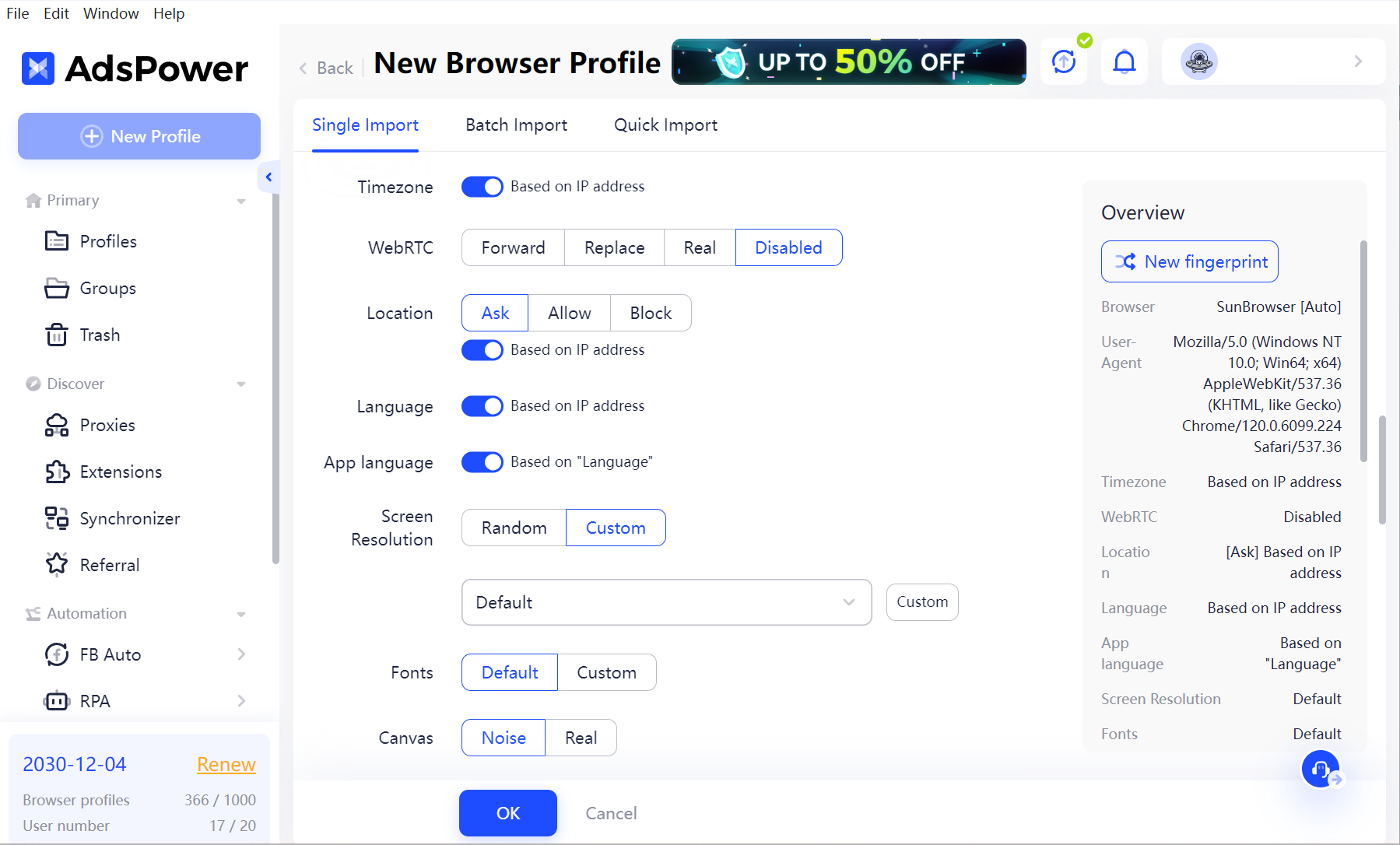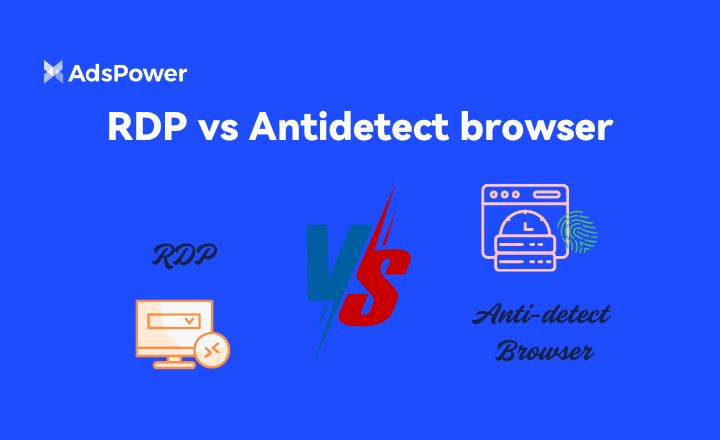Desglosando qué es un agente de usuario: componentes de UA y cómo buscarlos
Si eres un experto en raspado web o simplemente alguien preocupado por su privacidad en línea, seguramente te habrás topado con el término ‘Agente de usuario muchas veces veces. Debes haber oído que la cadena Agente de Usuario es uno de los elementos utilizados para tu perfil digital, y debes ocultarlo o falsificarlo a través de XYZ medios.
Pero nadie se molesta en decirte qué es un agente de usuario ni cómo buscarlo. No te preocupes, porque estamos aquí para darte un resumen completo del agente de usuario.
Profundicemos más y descubramos qué es un agente de usuario, de qué está hecho y cómo puedes encontrar la cadena de UA de tu navegador.
Entendiendo qué es un agente de usuario
Cuando los navegadores envían una solicitud a un servidor de sitios web, adjuntan un encabezado de agente de usuario HTTP junto con ella. Este encabezado se compone de información sobre el navegador, el dispositivo y el sistema operativo, entre otros detalles técnicos.
Esta información dentro del encabezado se denomina cadena de agente de usuario y los servidores web la utilizan para autenticar la solicitud del navegador y mostrar la versión del sitio web adecuada para el dispositivo del usuario.
Entonces, en esencia, ¿qué hace un agente de usuario? Simplemente identifica el navegador y su plataforma al servidor para brindar una mejor experiencia al usuario final.
El servidor web remoto tiene un conjunto de versiones de sitios web disponibles para diferentes entornos. Comprueba el encabezado del agente de usuario recibido. bsp;y averigua de qué entorno proviene. ¿Es un agente de usuario de escritorio, un agente de usuario de iOS o un agente de usuario de Android?
Por ejemplo, si el sitio web detecta un agente de usuario de Android, la versión de Android de la página web se devuelve como compatible con el dispositivo del usuario.
Para responder brevemente qué es un agente de usuario, es una cadena que actúa en su nombre cuando accede a sitios web o servicios de Internet. La cadena incluye información sobre el software y el dispositivo, y los sitios web la utilizan para mejorar su experiencia en su sitio. />
Sin embargo, los agentes de usuario también son uno de los muchos atributos utilizados para huella digital del navegador. Para combatir esto, Chrome lanzó su propio UA-CH, donde UA significa agente de usuario y CH es la abreviatura de sugerencias de cliente.
También puedesEvite la huella digital del navegadormediante el uso de AdsPowerNavegador antidetección que te permite crear un agente de usuario aleatorio y personalizar la zona horaria, WebRTC, la ubicación y el idioma, entre otros parámetros utilizados en la identificación del navegador.
Mientras tanto, sigamos con nuestro tema y decodifiquemos más a fondo la cadena del agente de usuario.
Componentes de un agente de usuario
¿Alguna vez has notado que las páginas web muestran sutiles variaciones de diseño cuando se accede a ellas desde un dispositivo Apple, en comparación con otros? Esto se debe a que el encabezado del agente de usuario que recibe el sitio web desde los dispositivos Apple es diferente al de otros dispositivos.
Pero, ¿en qué se basan los contenidos que determinan qué versión del sitio web mostrar los servidores web?
Veámoslo a través de un agente de usuario aleatorio.
¿Qué son todos esos términos y números? Entendámoslos uno a uno.

Token heredado
Los agentes de usuario más comunes tienen ‘Mozilla/5.0’ al principio. Este es un remanente de finales de los 90.browser wars y fue utilizado por primera vez por Netscape, un navegador líder en aquel entonces. Dado que los sitios web a menudo creaban versiones optimizadas para navegadores populares, era probable que las solicitudes de navegadores menos populares se rechazaran por ser sospechosas.
Para superar esto, los navegadores menos populares crearon cadenas de agente de usuario personalizadas a partir de Mozilla/5.0 para que pareciera agentes de usuario populares de navegadores más dominantes. De esta manera, aseguraron la compatibilidad con sitios web diseñados para navegadores grandes.
Sin embargo, el uso actual del token en el encabezado del agente de usuario es únicamente por razones de formalidad y tiene poca relación con el navegador real en uso.
Sistema operativo
Esta parte del encabezado del agente de usuario revela detalles sobre el sistema operativo. En nuestro ejemplo de agente de usuario, "Windows NT 10.0" significa el sistema operativo como Windows 10 y "Win64 x64". significa que es la versión de 64 bits de Windows 10, que se ejecuta en una arquitectura de dispositivo x64.
Esta parte difiere entre dispositivos y puede tener diferentes números de términos separados por "". Por ejemplo, en el agente de usuario de Chrome para Linux, esta parte se parece a "(X11; Linux x86_64)". lo que indica que la versión de Linux es X11 con una arquitectura x86 de 64 bits.
De manera similar, los dispositivos móviles también tienen sus diferencias.
Aquí hay algunos ejemplos de agentes de usuario móviles;
Agente de usuario de Android
- Samsung Galaxy S22 5G con Android 13 y plataforma Linux:
Mozilla/5.0(Linux; Android 13; SM-S901B) AppleWebKit/537.36 (KHTML, como Gecko) Chrome/112.0.0.0 Móvil Safari/537.36
- Google Pixel 7 con Android 13 y plataforma Linux:
Mozilla/5.0 (Linux; Android 13; Pixel 7) AppleWebKit/537.36 (KHTML, como Gecko) Chrome/112.0.0.0 Móvil Safari/537.36
Agente de usuario de iOS
- iPhone 12 con iOS 13.0 compatible con macOS:
Mozilla/5.0(iPhone12,1; U; CPU iPhone OS 13_0 similar a Mac OS X) AppleWebKit/602.1.50 (KHTML, similar a Gecko) Versión/10.0 Móvil/15E148 Safari/602.1
Motor de renderizado del navegador
Esta sección muestra el motor de renderizado que utiliza el navegador. Los motores de renderizado se encargan de traducir HTML y CSS en páginas web visuales e interactivas.
‘Parpadeo’ motor, Introducido por el proyecto Chromium en 2013.
El AppleWebKit/537.36 que aún se ve en cadenas de agente de usuario comunes se debe a que se basa en AppleWebKit.
Motores de renderizado compatibles
Este es otro indicador de compatibilidad que indica que el navegador es compatible con los motores de renderizado KHTML y Gecko. Esto es principalmente histórico y se utiliza por motivos de compatibilidad. También tiene sentido, ya que Apple WebKit fue una bifurcación del motor KHTML.
Aquí hay algunos ejemplos de agentes de usuario de Firefox;
- Agente de usuario de Windows
Mozilla/5.0 (Windows NT 10.0; Win64; x64; rv:123.0) Gecko/20100101 Firefox/123.0
- Agente de usuario de Android
Mozilla/5.0 (Android 14; Móvil; rv:123.0)Gecko/123.0 Firefox/123.0
- Agente de usuario de iOS
Mozilla/5.0 (iPad; CPU OS 14_3_1 similar a Mac OS X) AppleWebKit/605.1.15(KHTML, como Gecko) FxiOS/123.0 Mobile/15E148 Safari/605.1.15
Nota:Los agentes de usuario de Firefox suelen tener cuatro componentes.
Navegador actual y versión del navegador
Esta parte informa sobre el navegador real de donde proviene el agente del usuario. En este caso, el navegador era p;Google Chrome, versión 122. Los sitios web usan este bit para mostrar el contenido web apropiado creado para ese navegador.
Navegador compatible
El Safari/537.36 adicional está ahí para mostrar que el navegador real está basado en WebKit de Safari. El 537.36 muestra el número de compilación de Safari.
Pero en el caso de un agente de usuario de Safari que viene directamente del navegador de Safari, la cadena se ve así.
- Agente de usuario de iPhone
Mozilla/5.0 (iPhone; CPU iPhone OS 17_3_1 similar a Mac OS X) AppleWebKit/605.1.15 (KHTML, similar a Gecko)Versión/17.3.1 Móvil/15E148 Safari/604.1
- Agente de usuario de iPad
Mozilla/5.0 (iPad; CPU OS 17_3_1 similar a Mac OS X) AppleWebKit/605.1.15 (KHTML, similar a Gecko)Versión/17.3.1 Móvil/15E148 Safari/604.1
La versión/17.3.1 muestra la versión de Safari, mientras que 604.1 es el número de compilación. El bit Móvil/15E148 indica que se trata de un dispositivo móvil.
Para los más curiosos,Este blog ofrece una buena explicación de cómo evolucionaron los componentes del Agente de Usuario a lo largo de los años.
Además, para averiguar qué indica cada bit de tu agente de usuario, pásalo a través de este. Pero para eso, primero busquemos tu cadena UA.
¿Qué es mi agente de usuario?: Búsqueda de agente de usuario
Ahora que ya sabe qué es un agente de usuario, le interesará conocer la cadena de agente de usuario de su navegador. Existen muchas herramientas en línea para la búsqueda de agentes de usuario. En Google, al buscar "cuál es mi agente de usuario", aparecerá la cadena de agente de usuario como el primer resultado.
Alternativamente, puedes encontrar la cadena de agente de usuario usando la consola del navegador.
- Abre las herramientas para desarrolladores en tu navegador presionando F12
- Abrir
- Escribe navigator.userAgent y pulsa Intro

Lista de Agentes de Usuario de Diferentes Navegadores
Una vez aclarado qué es un Agente de Usuario, es importante saber que existen más de un tipo. Cada Agente de Usuario de un navegador difiere de otro, ya sea en detalles o en la cantidad de componentes.
Aquí tienes una lista de los Agentes de Usuario que los diferentes navegadores suelen enviar a los sitios web.
Cadena del agente de usuario de Firefox
- Mozilla/5.0 (plataforma; rv:geckoversion) Gecko/geckotrail Firefox/firefoxversion
Cadena del agente de usuario de Chrome
- Mozilla/5.0 (X11; Linux x86_64) AppleWebKit/537.36 (KHTML, como Gecko) Chrome/51.0.2704.103 Safari/537.36
Cadena de agente de usuario de Edge
- Mozilla/5.0 (Windows NT 10.0; Win64; x64) AppleWebKit/537.36 (KHTML, como Gecko) Chrome/91.0.4472.124 Safari/537.36 Edg/91.0.864.59
Cadena del agente de usuario de Safari
- Mozilla/5.0 (iPhone; CPU iPhone OS 13_5_1 similar a Mac OS X) AppleWebKit/605.1.15 (KHTML, similar a Gecko) Versión/13.1.1 Móvil/15E148 Safari/604.1
¡Se acabó!
Las cadenas de agente de usuario, aunque modificables por los clientes, no son confiables para que los administradores web protejan los servidores contra el tráfico de bots. Además, representan un problema de privacidad, ya que pueden usarse parahuella digital del navegador, seguimiento de los usuarios en función de la información de su navegador. A medida que aumenta la conciencia sobre la privacidad en línea, existe la necesidad de abandonar su uso o hacerlo menos identificable. Los proveedores de navegadores están desarrollando un nuevo sistema para la identificación de clientes sin funciones "identificables".

Estos perfiles sirven como identidades digitales, lo que permite a los usuarios gestionar su presencia en línea con más control. Al ofrecer una variedad de huellas dactilares del navegador, nbsp;opciones de suplantación, AdsPower permite a los usuarios personalizar huellas dactilares más diversas y auténticas, lo que dificulta que los sitios web las rastreen en la web.

Esta fue nuestra guía para responder qué es un agente de usuario y sus componentes. Esperamos que después de leerla, sepas que ve un conocimiento más profundo del agente de usuario, sus componentes y cómo se utiliza en el backend cuando solicitas un sitio web.

La gente también leyó
- ¿Para qué se utiliza WebRTC? ¿Revela WebRTC tu dirección IP?

¿Para qué se utiliza WebRTC? ¿Revela WebRTC tu dirección IP?
Aprende qué es WebRTC, para qué se utiliza, si revela tu dirección IP y cómo protegerte con herramientas como los modos WebRTC de AdsPower.
- RDP frente a navegador antidetect: ¿Cuál es la diferencia y cuál es más seguro?

RDP frente a navegador antidetect: ¿Cuál es la diferencia y cuál es más seguro?
¿Utilizas RDP o un navegador antidetect para administrar tus cuentas? Consulta las diferencias entre RDP y un navegador antidetect y cómo elegir el adecuado.
- Cómo evitar la huella digital del navegador: una guía completa

Cómo evitar la huella digital del navegador: una guía completa
¿Te preocupa la huella digital del navegador? Nuestra guía te ayuda a evitarla, revelando la mínima información personal.
- ¿Qué son las fugas de WebRTC y cómo prevenirlas?

¿Qué son las fugas de WebRTC y cómo prevenirlas?
Las fugas de RTC web pueden ponerte en riesgo en cualquier momento. Por eso, en este artículo, exploramos qué son y cómo puedes prevenirlas.
- Huellas TLS: Técnicas y métodos de elusión

Huellas TLS: Técnicas y métodos de elusión
En este artículo, exploraremos el concepto de huella digital TLS, sus diversas técnicas y métodos para evitarlo.



